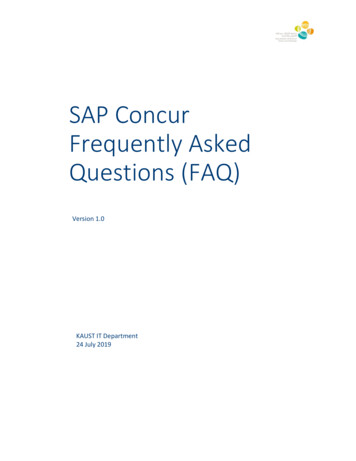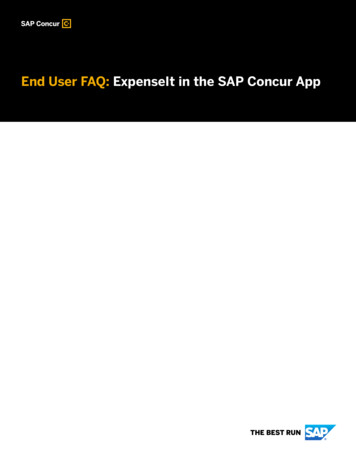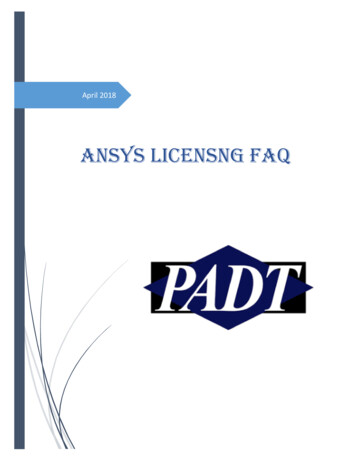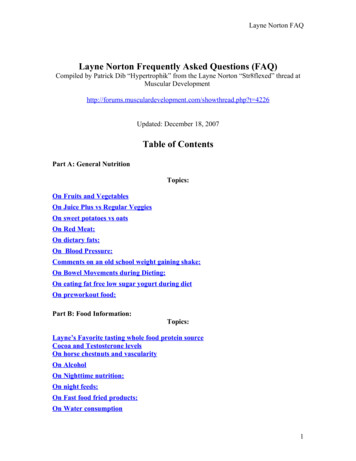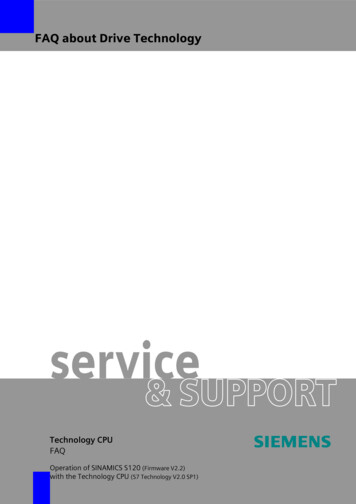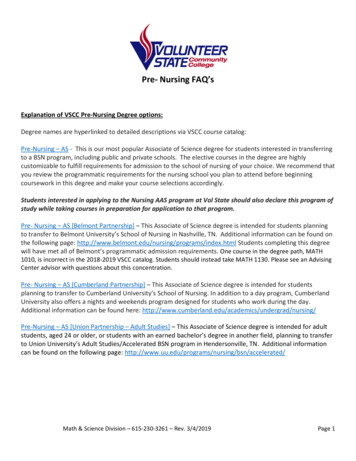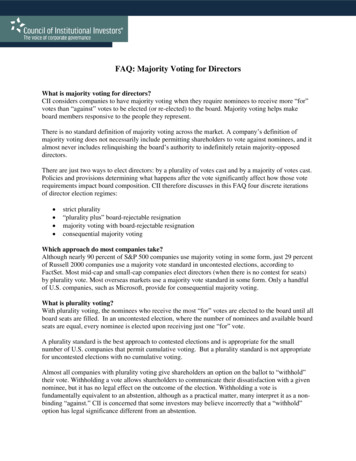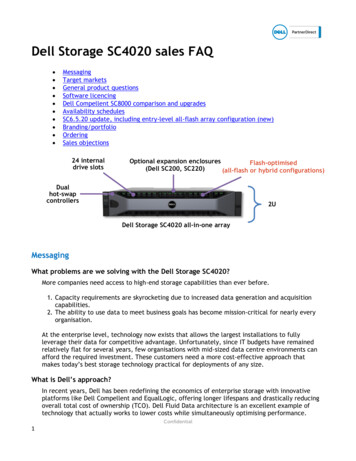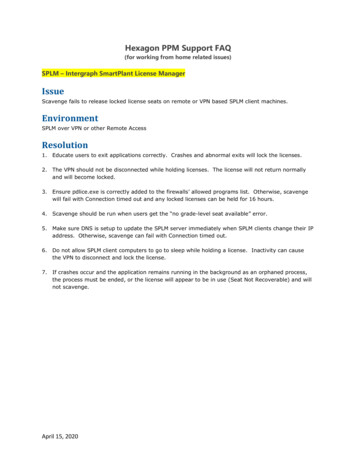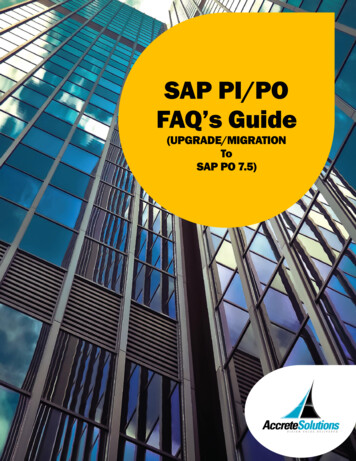
Transcription
SAP PI/POFAQ’s Guide(UPGRADE/MIGRATIONToSAP PO 7.5)
INTORDUCTIONSAP PI (Process Integration) is a middleware that allows seamless integrationbetween SAP and non-SAP application in a company or with systems outsidethe company. SAP PO (Process Orchestration) is a tool to automate andoptimize business processes. It combines features of SAP Business ProcessManagement (BPM), SAP Process Integration (PI), SAP Business RulesManagement (BRM) and others.SAP integration platform was first released in 2003 and was called SAP XI(Exchange Infrastructure). Around 2008, the first version of SAP ProcessIntegration (SAP PI) was released. SAP PI evolved from its initial version ofSAP PI 7.0 to PI 7.30. The first few versions of SAP PI consisted of ABAP andJava dual stacks similar to SAP XI. The first Java-only single stack integrationplatform of SAP PI 7.30 was introduced in 2010. Finally, SAP ProcessOrchestration (PO) was released by SAP in the year 2012.History/Evolution of SAP XI, PI, and PO VersionsWhy companies need to upgrade/migrate to SAPPO 7.5 from lower versions?According to SAP, SAP PI dual-stack installations (ABAP and JAVA) will besupported by SAP only until the end of 2020. This scenario requirescompanies to upgrade/migrate to SAP PO release 7.5. Application ServerABAP within SAP NetWeaver 7.10, 7.11, 7.20, 7.30 will be supported inmainstream maintenance till the end of 2020 with no extendedmaintenance.
Many organizations are still running on older platforms like SAP PI 7.1 or 7.20etc. There are many reasons for not using the latest releases byorganizations, such as Difficult task to get the system upgradedthey are licensed differentlyWhy risk an existing stable systemCosts involved with upgrades etc.However, since mainstream maintenance for SAP PI/PO releases 7.1x, 7.2x,and 7.3x is coming to an end by 2020, companies must plan to do anupgrade/migration project to move to SAP PO single stack release 7.5.Accrete can help organizations migrate to SAP PO 7.5 or to CPI using ourmigration methodology and tools.Advantages to upgrade/migrate to SAP PI/PO7.5There are many advantages in upgrading/migrating to SAP PO 7.5. Some ofthe benefits are listed below: New Functionality available in the latest Support Packs that can be usedto enhance scenarios without having to do any workarounds. Security bugs can be fixed from time to time. During implementation, organizations might face problems in thesoftware that need SAP to fix It would be much easier to maintain the code by implementing availablestandard functionality than having custom code or workarounds Get the SAP support with the latest release as SAP has a limit on supporttime for each release. Upgrade to HANA Database can improve performance In Single Stack SAP PO, the throughput of message processing ishigher without any need of increase resources
Upgrade to HANA Database can improve performance In Single Stack SAP PO, the throughput of message processing ishigher without any need of increase resources Monitoring tools centralized in a single pointOptions to Upgrade/MigrateWhat options do organizations with lower versions have for migration?Listed below are the possibilities/options:SAP PI/PO FAQ’sHow is SAP Process Orchestration priced?As of April 2013, the price metric for PI, BPM, BRM, and PO has been changed toa linear core-based pricing model. The new price list item for PO has replaced allPI, BPM, and BRM price list entries. All previously sold licenses for PI (eithervolume-based or CPU-based), and BPM/BRM (CPU-based) have been moved tothe so-called legacy price list.How many cores are required for SAP Process Orchestration?The number of cores required is based on the sizing of PO whereas the minimalnumber of CPU cores a customer has to purchase is 2. The sizing is determinedby properly sizing the usage of the different components, especially BPM and PIcomponents etc.
What is included in the SAP Process Orchestration license?The SAP Process Orchestration (PO) license includes the usage of the followingcomponents:Whatif I Processonly wantPI or BPM? SAPIntegration(PI) SAPBusinessProcessManagement(BPM)If youhaveuse casesthat onlyrequire BPMor PI, you still need to purchase PO SAP PIBusinessRulesManagement(BRM) material numbers anymore. Youlicenses.and BPMdo notexist as individualSAP nto.(B2B Add-on)can thenwhichcomponentsto allocate the license SAP Process Integration, Secure Connectivity Add-on SAP Process Integration, Connectivity Add-on Cloud integration runtime (SAP Cloud Platform Integration runtime codeployed) Process Integration test tool (PIT)Why is PI dual-stack now called PI dual usage type?The PI dual-stack is based on an application server ABAP and an applicationserver Java. The core of a middleware, the messaging system, resides on theABAP stack. The Business Process Engine for running integration-centricprocesses (ccBPM), and the user management also reside on ABAP stack. Theadapter engine holding most of the connectors as well as the mapping engineruns on the Java stack.As of release 7.5, the dual-stack architecture is not supported. So, whenupgrading your PI dual-stack system to 7.5, you need to split the stacksafterwards. Hence, this is called PI dual usage type. See SAP note 2190371 formore information.What license is required for the B2B Add-on?As of 2014, the B2B Add-on is part of the PO license material number and is notavailable separately on the price list.
SAP PI 7.0 to PI 7.30. The first few versions of SAP PI consisted of ABAP and Java dual stacks similar to SAP XI. The first Java-only single stack integration platform of SAP PI 7.30 was introduced in 2010. Finally, SAP Process Orchestration (PO) was released by SAP in the year 2012. History/Evolution of SAP XI, PI, and PO Versions

